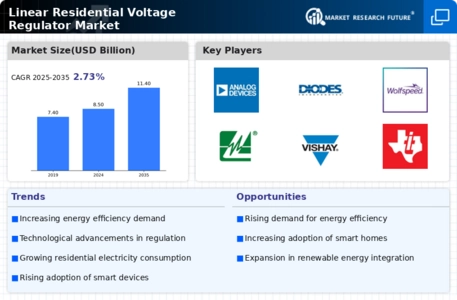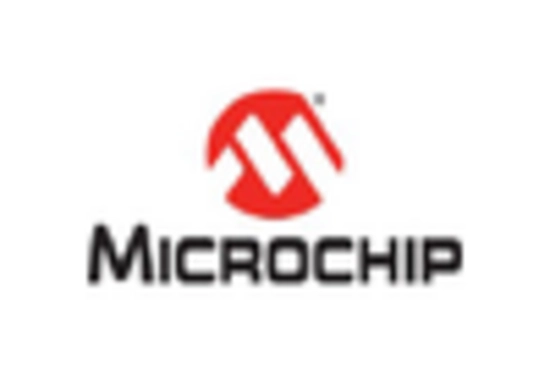Increasing Demand for Energy Efficiency
The rising emphasis on energy efficiency is a pivotal driver for the Linear Residential Voltage Regulator Market. As consumers become more conscious of energy consumption, the demand for devices that optimize energy use has surged. Voltage regulators play a crucial role in maintaining stable voltage levels, thereby reducing energy waste. According to recent data, energy-efficient appliances and systems are projected to grow at a compound annual growth rate of approximately 8% over the next five years. This trend indicates a robust market for linear voltage regulators, as they are integral to enhancing the efficiency of residential electrical systems. Furthermore, regulatory bodies are increasingly mandating energy efficiency standards, which further propels the adoption of voltage regulation technologies in residential settings.
Growing Awareness of Power Quality Issues
The increasing awareness of power quality issues among consumers is a significant driver for the Linear Residential Voltage Regulator Market. Fluctuations in voltage can lead to equipment damage and inefficiencies, prompting homeowners to seek solutions that ensure stable power supply. Reports indicate that power quality problems cost residential users billions annually in equipment failures and energy losses. As a result, there is a growing market for voltage regulation solutions that can mitigate these issues. The demand for linear voltage regulators is expected to rise as consumers prioritize the protection of their electronic devices and appliances. This heightened awareness of power quality not only drives sales but also encourages manufacturers to innovate and improve their product offerings in the voltage regulation sector.
Rising Adoption of Smart Home Technologies
The integration of smart home technologies is significantly influencing the Linear Residential Voltage Regulator Market. As households increasingly adopt smart devices, the need for stable and reliable power supply becomes paramount. Voltage regulators ensure that smart devices operate efficiently without fluctuations that could lead to malfunctions. The market for smart home devices is expected to reach USD 174 billion by 2025, indicating a substantial opportunity for voltage regulators to support this growth. Moreover, the compatibility of linear voltage regulators with smart home systems enhances their appeal, as they can be seamlessly integrated into existing electrical frameworks. This trend suggests that as more consumers invest in smart home technologies, the demand for linear residential voltage regulators will likely increase correspondingly.
Technological Innovations in Voltage Regulation
Technological innovations in voltage regulation are propelling the Linear Residential Voltage Regulator Market forward. Advances in semiconductor technology and digital control systems have led to the development of more efficient and reliable voltage regulators. These innovations enable better performance, reduced energy losses, and enhanced compatibility with modern electrical systems. The market is witnessing a shift towards more sophisticated voltage regulation solutions that can adapt to varying load conditions and provide real-time monitoring. As these technologies continue to evolve, they are expected to attract a broader customer base, including those seeking high-performance solutions for their residential electrical needs. The ongoing trend of innovation suggests that the linear residential voltage regulator market will experience sustained growth as new technologies are introduced.
Regulatory Support for Voltage Regulation Technologies
Regulatory support for voltage regulation technologies is emerging as a crucial driver for the Linear Residential Voltage Regulator Market. Governments and regulatory bodies are increasingly recognizing the importance of voltage stability in residential areas, leading to the implementation of standards and incentives for energy-efficient technologies. For instance, various initiatives aim to promote the adoption of voltage regulators as part of broader energy efficiency programs. This regulatory backing not only enhances consumer confidence but also stimulates market growth by encouraging manufacturers to invest in research and development. As regulations evolve, the linear residential voltage regulator market is likely to benefit from increased demand driven by compliance requirements and incentives for energy-efficient solutions.

















Leave a Comment